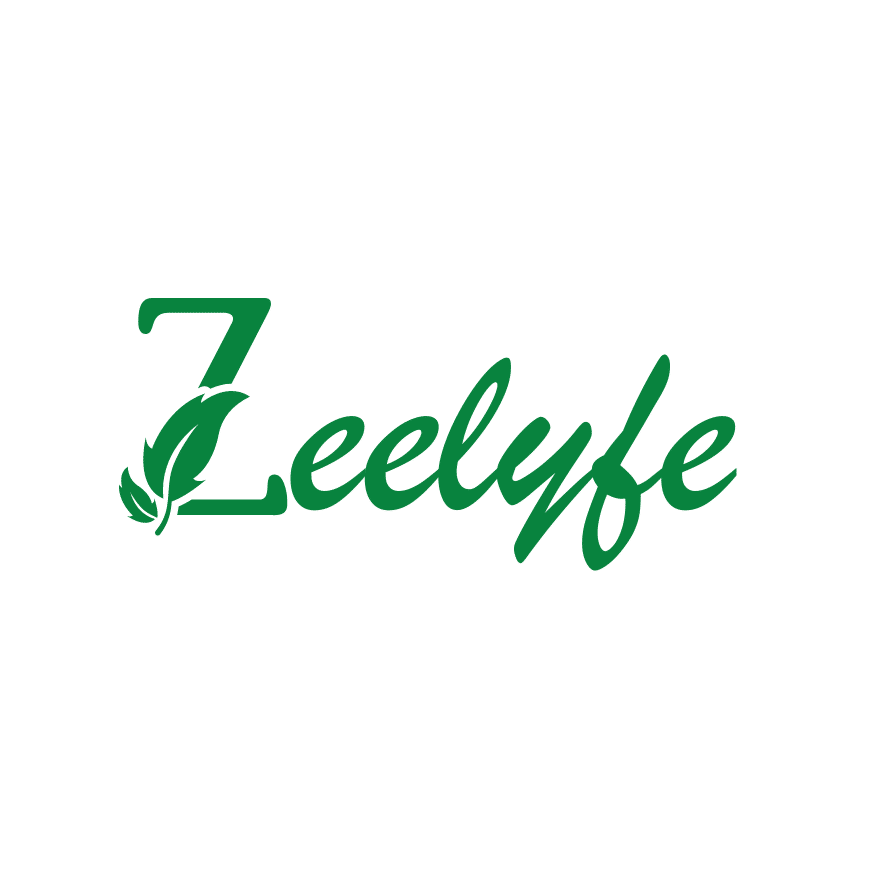Are you searching for beautiful, resilient plants that can thrive in dry conditions while adding a touch of elegance to your garden? Look no further than drought-tolerant plants with white flowers. These remarkable botanical wonders not only withstand arid environments but are also mesmerize with their pristine white blossoms.
Here are some of the best drought-tolerant plants with white flowers that can grow easily in your garden.
Snow-in-Summer (Cerastium tomentosum)
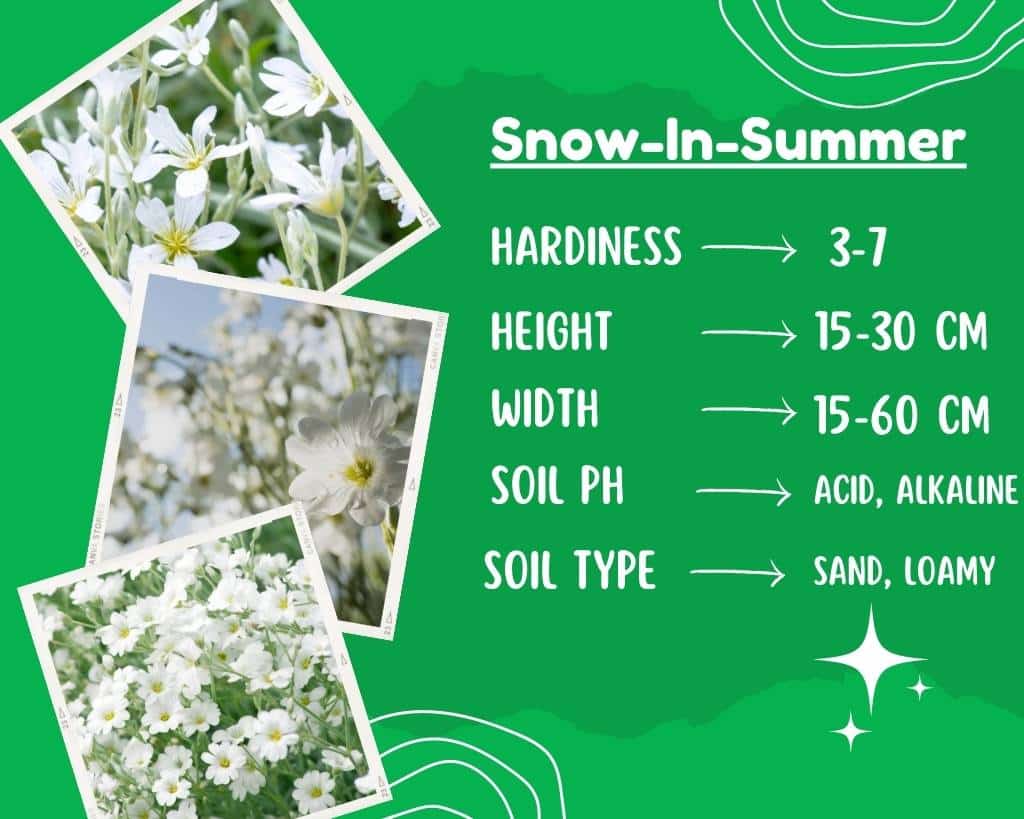
The snow-in-summer plant (Cerastium tomentosum) is named as such due to its appearance during the flowering season. The plant produces a profusion of small, white flowers that cover the foliage, creating a carpet-like effect reminiscent of a snowfall.
Its woolly, silver-colored foliage is also as attractive as its flowers. This short-lived perennial spreads quickly in favorable conditions and thrives in dry, sunny areas.
It is ideal for Northern coastal regions, rock gardens, and filling pockets in stone walls. In addition to its aesthetic appeal, snow-in-summer attracts pollinators such as bees and butterflies, contributing to the overall health and biodiversity of the garden.
Silver Carpet, Album and Heywoodii are beautiful varieties you can incorporate in garden settings, preferably as ground covers.
Combining it with lamb’s ear or dusty miller creates a serene, textured-theme garden. To create a more colorful theme, combine it with Purple Coneflower or Russian Sage.
Gaura (Gaura lindheimeri)

Gaura, also known as Whirling Butterflies (Gaura lindheimeri), is a delightful drought-tolerant perennial plant with beautiful flowers that gives a remarkable impression of butterflies roaming in a sunny garden.
The pink or white colored blooms emerge in abundance from spring to fall, creating a beautifully textured look in the garden.
Gaura is not only beautiful, but it is also a tough, drought-resistant plant that can easily thrive in hot and dry conditions. Bees and butterflies love the nectar-rich flowers of gaura, making it a great addition to pollinator gardens.
Also, you can combine gaura with echinacea to create a dynamic display of flowers, attracting many pollinators. You can also combine it with Agastache to establish texture and contrast.
Whirling Butterflies, So White, and Passionate Blush are some popular varieties with white flowers that you can combine with the plants mentioned above.
Rock Rose (Cistus spp.)

Rock Rose is a hardy perennial flowering shrub with beautiful papery flowers that add a touch of elegance. It is prominently found in the coastal areas of the Mediterranean.
Rockrose is incredibly resilient, tolerating severe heat, strong winds, and longer dry spells. It can even survive in poor-quality soils where other plants struggle.
It is commonly planted in landscape settings such as rock gardens, borders, and slopes, where its low-maintenance nature and natural beauty shine.
It is loved by pollinators such as bees and butterflies. It remains largely unscathed by any diseases or pests.
You can add glamour to your garden by planting rock roses with another Mediterranean beauty, lavender. Some gardeners love combinations with contrasting textures, and you can choose from agave or artemisia to create a lovely contrasting pattern.
Cistus salvifolius, Cistus ladanifer, and Cistus corbariensis are some of the well-known varieties of rock rose that you can choose from.
Shasta Daisy (Leucanthemum x superbum)
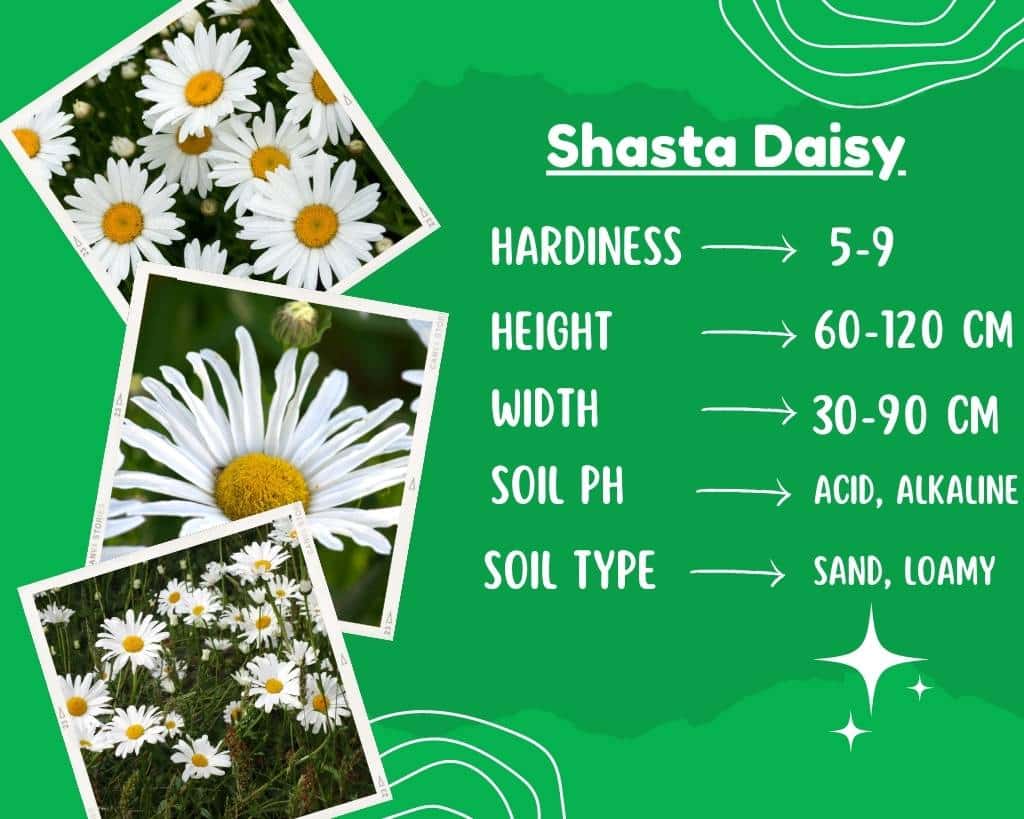
You might have heard the name of this fragrant, herbaceous perennial beauty that oozes elegance. A hybrid between oxeye and different daisy(wild) varieties, the Shasta daisy boasts immaculate white flowers and dark green foliage.
These daisies have sturdy stems and reach a height of about 2 to 3 feet, making them ideal for borders, cottage gardens, or as cut flowers.
Besides their aesthetic appeal, Shasta Daisies are also highly attractive to pollinators such as bees, butterflies, and hummingbirds. They are easy to maintain, and they can survive in harsh climates.
For creating a visually appealing garden, you can combine Shasta daisy with Russian sage to create an enchanting blend of height and texture.
Pairing Shasta Daisy with ornamental grasses, such as Feather Reed Grass (Calamagrostis x acutiflora) or Blue Fescue (Festuca glauca), adds visual interest and movement to the garden.
Becky, Snowcap, Brightside, and Victorian Secret are some of the varieties of Shasta daisies you can plant in your garden.
Ice Plant (Delosperma White Wonder)
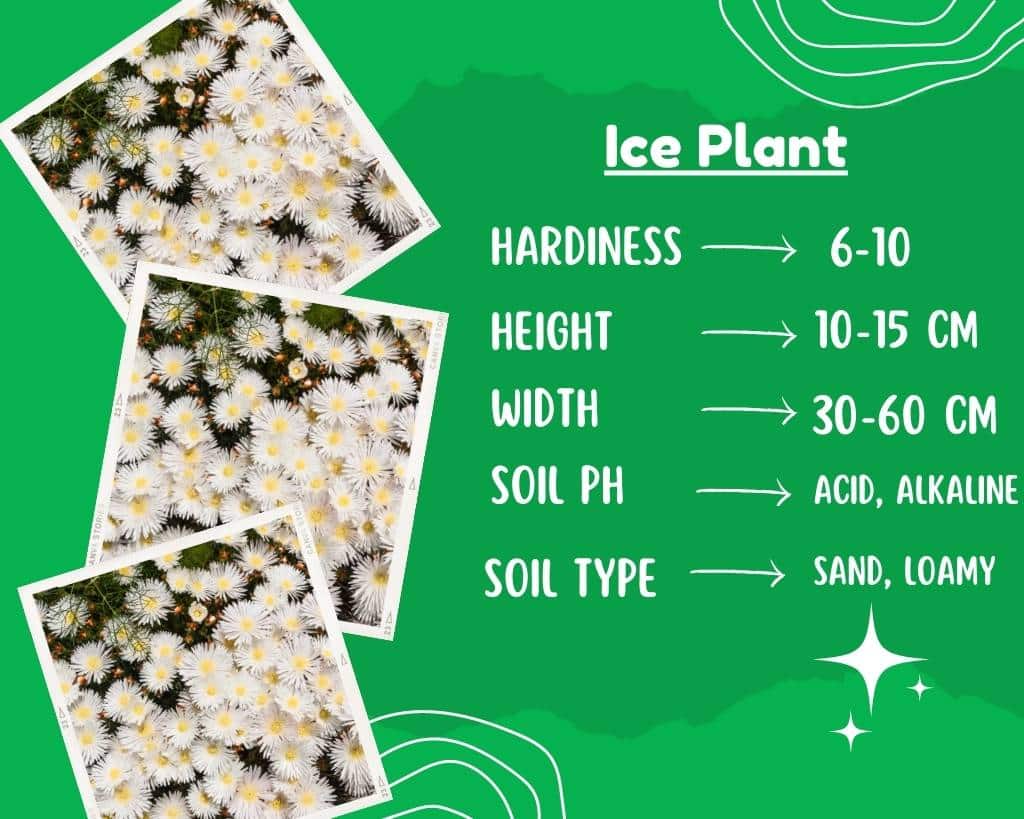
This South African native is known for its succulent leaves and pristine white flowers. The blooms, resembling delicate daisies, form a dense carpet of pure white flowers that create a striking contrast against the plant’s green foliage.
It is highly adaptable and thrives in various soil types, including sandy and poor soils. It can withstand more prolonged periods of drought, thus making it perfect for water-wise gardens.
This versatile flowering plant can be used in various ways, including rock gardens, slopes, or edging along pathways.
Pollinators love its nectar-rich, fragrant flowers. Besides this, it remains unaffected by the attacks of certain pests and diseases.
Now, consider planting them with the same growing requirements. Not only would these plants enhance the aesthetic appeal, but they would also improve the bio-diversity of your garden.
Pairing Ice Plants with various Sedum species creates a stunning combination of texture and color. The succulent leaves of both plants are drought-tolerant and provide a harmonious contrast.
Certain Ice Plant varieties such as Delosperma Congestum ‘White Nugget’ or Delosperma nubigenum ‘Alba’ can be planted with Sedum. You can also plant them with Echeveria, Santa Barbara Daisies, and Aeonium.
Soapwort (Saponaria officinalis)
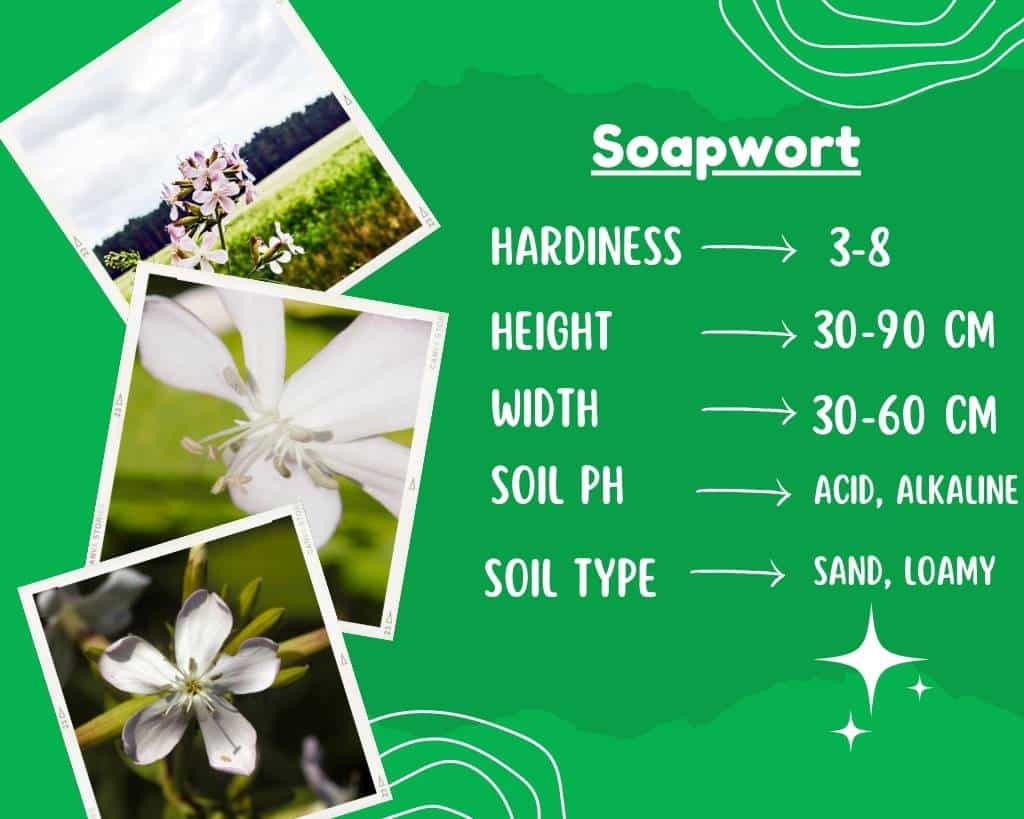
Soapwort is a low-growing herbaceous perennial forming charming white or pink flower clusters. Soapwort gets its name from its ability to produce a soapy lather when its leaves or roots are crushed and mixed with water.
This Eurasian native can be easily found in different parts of North America. When it comes to planting options, Soapwort thrives in well-drained soil. It grows best in full sun.
It can be incorporated into cottage gardens, meadow gardens, or as a charming addition to rockeries.
The drought-resistant white blooms are known to attract butterflies to the garden. It should be noted that in some areas, it can become invasive.
If you can handle it carefully, this plant can become a show-stopper in your garden when combined with other plants.
Combine it with lamb’s ear in the foreground, allowing its low-growing, silvery leaves to serve as a backdrop for the taller stems of Soapwort. The textural contrast between the two plants adds visual interest to the garden.
Other notable mentions of plants with colorful flowers are Creeping Thyme, Catmint, Russian Sage, Yarrow, Sedum and coneflowers.
You can combine the plants mentioned earlier with ideal soapwort varieties such as Alba, Flore Pleno, and Multiplex Plena.
Agapanthus (Agapanthus spp.)

A beautiful African native that boasts stunning white flowers borne on tall stalks. The flowers form spherical clusters, creating a striking display against the plant’s lush, strap-like, silvery green foliage.
It is a perennial plant that thrives in sunny locations and is well-adapted to various soil types. It is highly drought-tolerant and a valuable addition to water-wise gardens or Mediterranean-style landscapes.
It also works well as a focal point in borders, mass plantings, or as a container plant. In addition to its visual appeal, ‘Albus’ attracts pollinators such as bees and butterflies.
So, how can we combine Agapanthus with similar drought-resistant plants to enhance the beauty of our garden?
To create a colorful garden display, we can combine Agapanthus with Lavender. The white blooms of ‘Albus’ complement the blue or purple flowers of lavender, adding visual interest.
Pairing Agapanthus with Red Hot Poker plants creates a vibrant combination of white and fiery orange colors.
Agapanthus africanus’ Albus’, Agapanthus praecox ‘Snowball’, Agapanthus’ Silver Baby’, and Agapanthus’ Arctic Star’ are some of the varieties that you can consider planting in your garden.
Cosmos (Cosmos spp.)

In our list of drought-tolerant plants with white flowers, we have another daisy-like flower in various colors.
Cosmos adds grace and texture to any garden with its delicate and feathery foliage. It remains unfazed by extreme heat and drought.
This annual plant is easy to grow and thrives in full sun and well-drained soil. It is an excellent choice for borders, containers, or wildflower gardens.
The attractive blooms of the cosmos sit atop sleek stems that attract different pollinators to your garden.
To add more grace and color to your garden, you can combine it with Blanket Flower, which has warm tones of red, orange, and yellow colored flowers.
Combining Cosmos with Salvia adds a touch of vertical interest and contrasting flower forms.
Here are some recommended varieties you consider planting with the above-mentioned plants. Cosmos bipinnatus ‘Purity’, Cosmos sulphureus’ Cosmic White’, and Cosmos’ Xsenia White’ are the varieties you can choose from.
